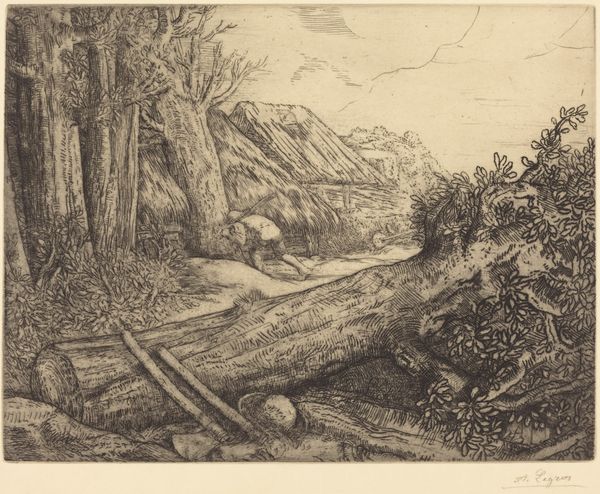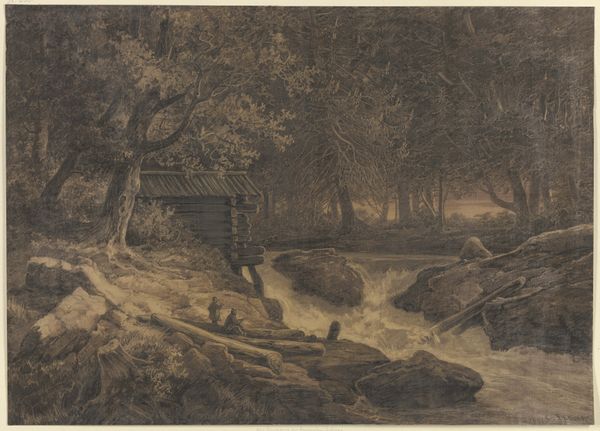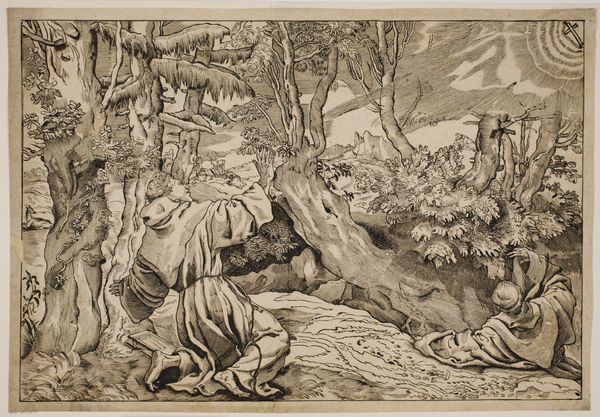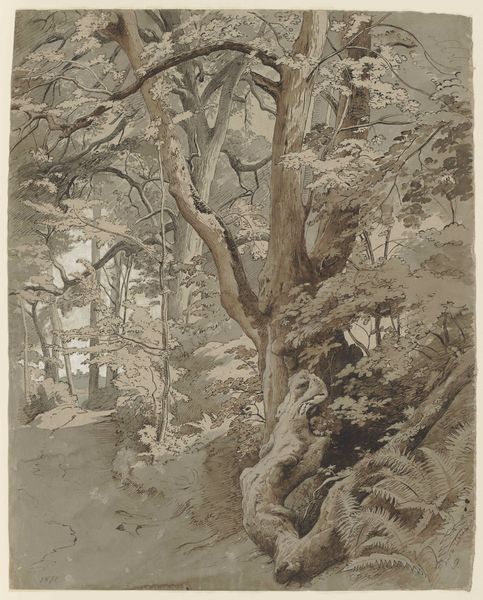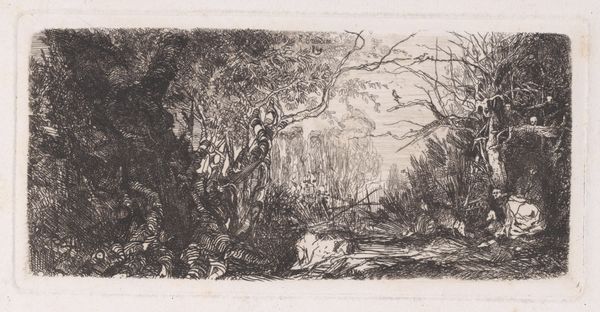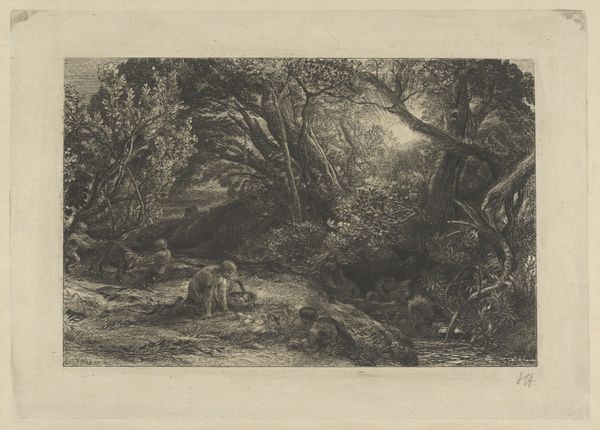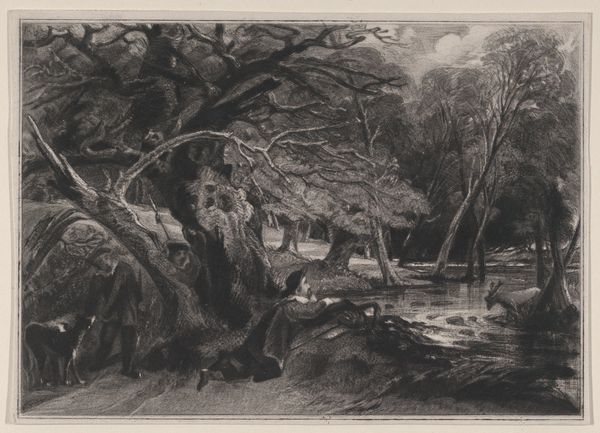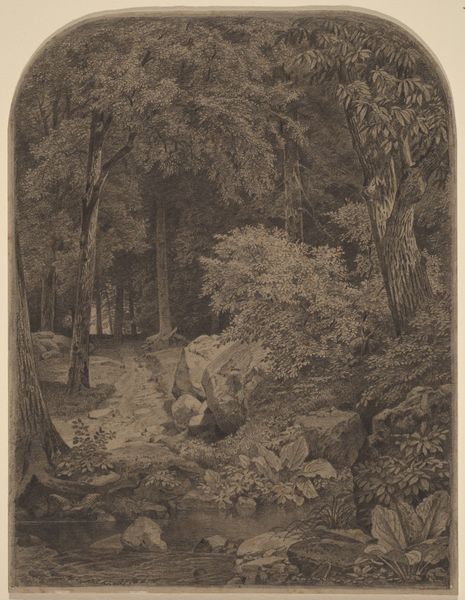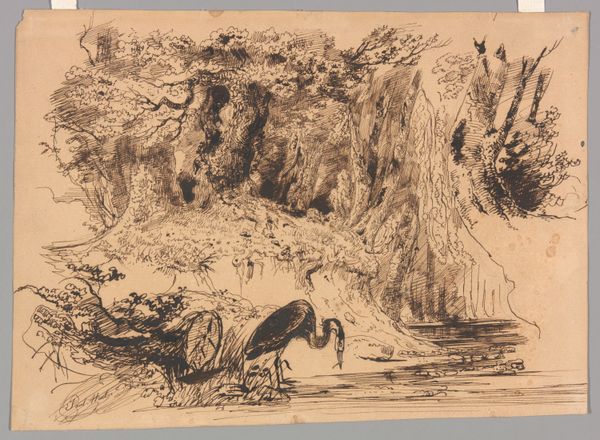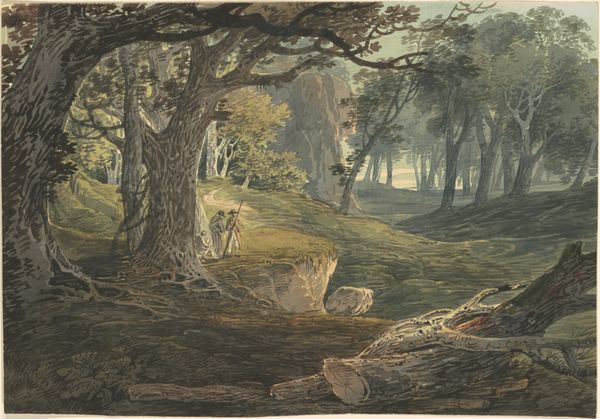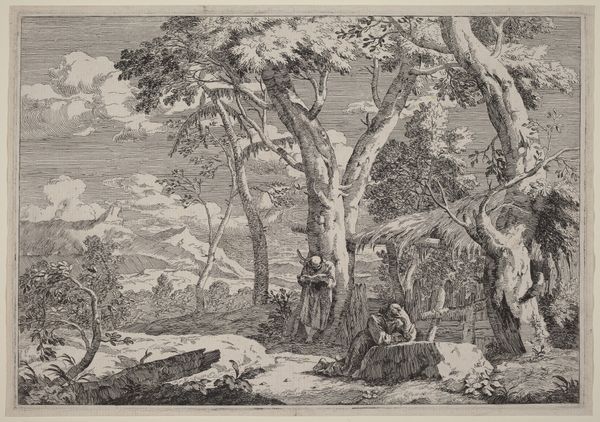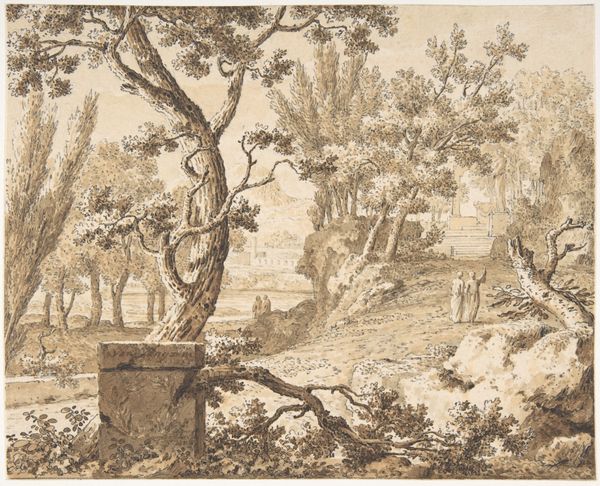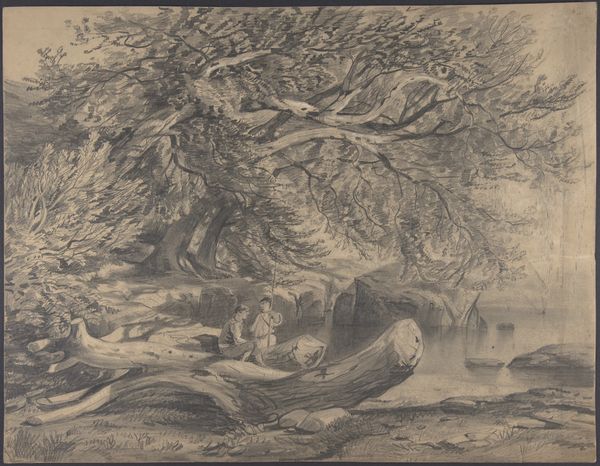
drawing, ink, charcoal
#
drawing
#
ink painting
#
landscape
#
charcoal drawing
#
ink
#
romanticism
#
charcoal
#
realism
Copyright: Public Domain
Curator: Immediately I’m drawn to the tranquil stillness. There’s a dreamlike quality, a soft melancholy hanging in the air, wouldn't you agree? Editor: I see what you mean. And it comes from the muted tones that dominate Johann Wilhelm Schirmer’s “Forest Landscape,” created around 1832. Let’s look closer at the use of ink and charcoal on this drawing and place the forest within the context of Romanticism. Curator: Absolutely, it is an important contextual step. Note how Schirmer renders this sylvan scene. See how nature takes precedence. We find a few geological oddities too – perhaps limestone karsts. And then the majestic tree dominating the left of the composition...it all coalesces into an emblem of Romantic-era nature worship. Editor: Indeed. The careful depiction of foliage – the reeds in the foreground, the tree’s heavy crown – speaks to Romanticism’s preoccupation with detail, inviting the viewer into nature's intricate web. I would hazard a guess and say that Schirmer is deliberately crafting a microcosm reflecting broader societal concerns: of humankind’s relationship with the natural world, the fragility of life in an increasingly industrialized world... Curator: A microcosm perhaps best epitomized by the watchful deer gazing out from the central, slightly raised clearing. What does this animal signify to you? Editor: For me, it’s loaded with symbolic weight – a guardian, a witness to nature’s undisturbed beauty. Its very presence transforms this tranquil scene into something sacred, protected. The forest as a sanctuary. Curator: Interesting you describe the deer in such reverent, protective terms. For me, the presence of that deer raises questions of access and exclusion: Who is allowed into this sacred space? Who defines the boundaries? And how do those definitions intersect with broader power structures related to class and land ownership in the early 19th century? Editor: That intersectional analysis deepens our appreciation of Schirmer's work, making "Forest Landscape" a timely commentary. Curator: Exactly. I'll now keep an eye out for the echoes and reflections between ecological concerns in Romanticism and today’s socio-political movements. Editor: And for my part, I’m freshly convinced that art like this contains codes and cultural traces, demanding of us deep analysis to unearth the treasures of meaning locked within.
Comments
No comments
Be the first to comment and join the conversation on the ultimate creative platform.
